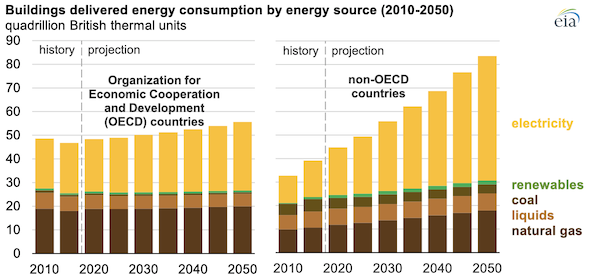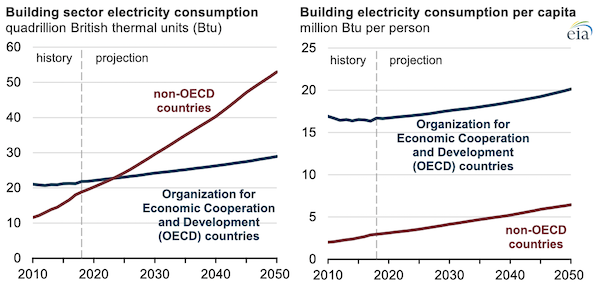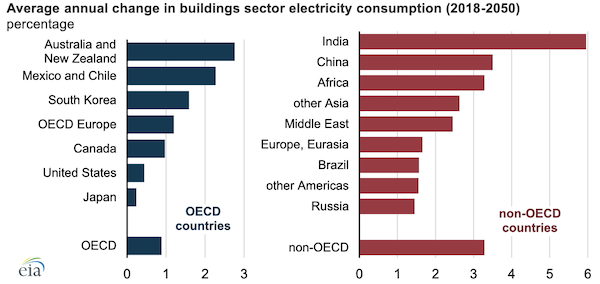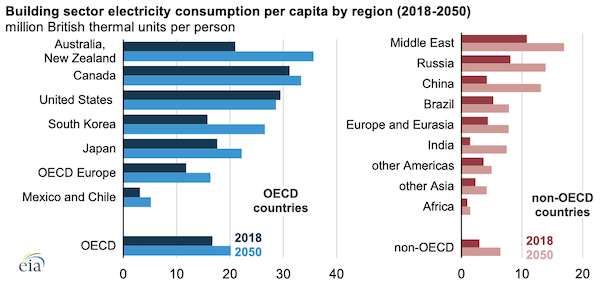Energy used in the buildings sector—which includes residential and commercial structures—accounted for 20% of global delivered energy consumption in 2018. In its International Energy Outlook 2019 (IEO2019) Reference case, the U.S. Energy Information Administration (EIA) projects that global energy consumption in buildings will grow by 1.3% per year on average from 2018 to 2050. In countries that are not part of the Organization for Economic Cooperation and Development (non-OECD countries), EIA projects that energy consumed in buildings will grow by more than 2% per year, or about five times the rate of OECD countries.

Electricity—the main energy source for lighting, space cooling, appliances, and equipment—is the fastest-growing energy source in residential and commercial buildings. EIA expects that rising population and standards of living in non-OECD countries will lead to an increase in the demand for electricity-consuming appliances and personal equipment.

EIA expects that in the early 2020s, total electricity use in buildings in non-OECD countries will surpass electricity use in OECD countries. By 2050, buildings in non-OECD countries will collectively use about twice as much electricity as buildings in OECD countries.
In the IEO2019 Reference case, electricity use by buildings in China is projected to increase more than any other country in absolute terms, but India will experience the fastest growth rate in buildings electricity use from 2018 to 2050. EIA expects that use of electricity by buildings in China will surpass that of the United States by 2030. By 2050, EIA expects China’s buildings will account for more than one-fifth of the electricity consumption in buildings worldwide.

As the quality of life in emerging economies improves with urbanization, rising income, and access to electricity, EIA projects that electricity’s share of the total use of energy in buildings will nearly double in non-OECD countries, from 21% in 2018 to 38% in 2050. By contrast, electricity’s share of delivered energy consumption in OECD countries’ buildings will decrease from 24% to 21%.
The per capita use of electricity in buildings in OECD countries will increase 0.6% per year between 2018 and 2050. The relatively slow growth is affected by improvements in building codes and improvements in the efficiency of appliances and equipment. Despite a slower rate of growth than non-OECD countries, OECD per capita electricity use in buildings will remain higher than in non-OECD countries because of more demand for energy-intensive services such as space cooling.

In non-OECD countries, the IEO2019 Reference case projects that per capita electricity use in buildings will grow by 2.5% per year, as access to energy expands and living standards rise, leading to increased use of electric-intensive appliances and equipment. This trend is particularly evident in India and China, where EIA projects that per capita electricity use in buildings will increase by 5.3% per year in India and 3.6% per year in China from 2018 to 2050.
Principal contributor: Behjat Hojjati

Follow us on social media: